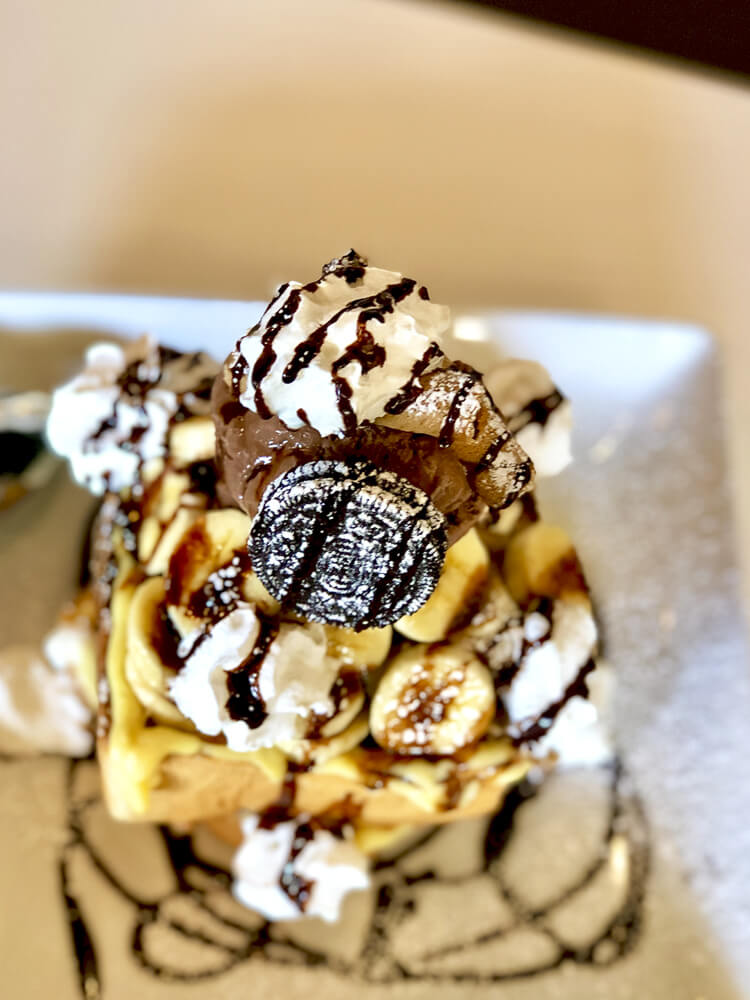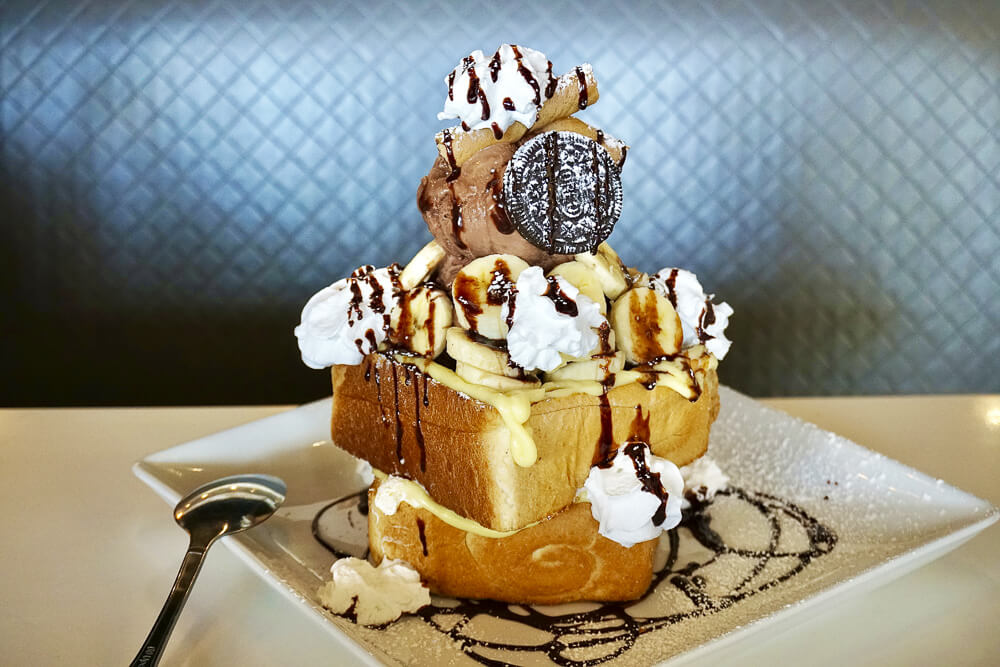The macabre-sounding meal resembles a casket in toast form; its origins trace back to the Middle Ages and span across many cultures.
During L.A.’s Taiwanese cafe “small eats” moment in the earlier part of this decade, coffin bread was relatively simple to track down. Search out virtually any trendy Taiwanese cafe serving bubble tea and snacks and chances were good for spotting the hollowed-out fried bread swelling with a savory filling and topped by its signature crust cap.
Nowadays, with the influx of big-name mainland Chinese restaurants, such as Meizhou Dongpo and Haidilao, shifting eater preferences away from casual Taiwanese fare, the meal that resembles a casket in toast form has virtually vanished from L.A. County. Did we get ghosted by coffin bread?
Coffin bread isn’t as morbid as it sounds. Chances are you’ve had something quite similar. If you’ve ever devoured a sourdough bread bowl overflowing with New England clam chowder, like the original ones created at Boudin Bakery in San Francisco circa the late 1800s, then you’ve eaten an elderly relative to Taiwanese coffin bread (but not in a Hannibal Lecter way).
Created sometime during the 1940s in the city of Tainan in southern Taiwan, coffin bread is known locally as coffin lid or coffin board. Tainan is also recognized as Taiwan’s food capital of sorts as the area has spawned many other delicious delicacies like oyster omelets, slithery eel noodles and milkfish congee.
But coffin bread’s origins go back even further. According to Bon Appétit, “In the Middle Ages, plating basically consisted of ladling stews or porridge into trenchers — hollowed out ‘plates’ cut from loaves of old bread, the staler the better.”
Thankfully, staleness isn’t a benchmark for quality any longer.
A coffin bread recipe calls for fresh bread that’s sliced roughly three inches thick (like an extra husky Texas toast) and then quickly deep-fried to a crisp-ish exterior. Either way, there’s something timeless and appealing about eating food out of an edible vessel, if not just for the high practicality of devouring your soiled dishes instead of washing them.
To dive even deeper into the realm of hollowed-out bread filled with a stew-like substance, South African bunny chow is more closely related to coffin bread than it is to a sourdough bread bowl brimming with clam chowder. Bunny chow is the curious name for a street food created by Indian immigrants in the South African city of Durban.
Using extra thick toast that’s been plundered of its bready innards and then filled with a Durban-style curry — no bunnies are harmed making this dish — bunny chow was an adaptation of a traditional Indian dish when roti, a round flatbread, wasn’t readily available. During the peak of L.A.’s food truck revolution, a converted double-decker food bus called World Fare briefly hawked this rare item before going out of business.
Another important parallel bunny chow has to coffin bread is the “lid.” The lid in this scenario is the crust part of the bread that’s been sliced off to get to the soft pliable portion. It’s set aside and presented as a topper for the loaded entree, completing the savory sarcophagus — although sometimes it’s not included with the dish.
Restaurateur/chef Hsu Liu-Yi is largely credited with the creation of coffin bread. He originally stuffed chicken livers and gizzards into the bulky bread. Nowadays the norm for the filling is a chowder prepared with shrimp, squid, pork, carrots and peas. One of the last bastions for authentic Tainan coffin bread was Pa Pa Walk in San Gabriel, but it’s since shuttered.

But coffin bread still haunts L.A. On the eastern fringe of the city in Rowland Heights, MJ Cafe and Teahouse offers a dessert variation. Decadent combinations like chocolate ice cream and bananas or matcha and red bean with sweet syrups are packed into the coffin bread that MJ Cafe calls Honey Toast. The cafe bakes its bread rather than the traditional deep-frying. Opting to not include the bread’s top, this version of coffin bread is akin to “brick toast,” its more available cousin and popular Taiwanese bread-based dessert.
While coffin bread may be suffering death throes in the City of Angels, its ancestors and spinoffs persevere. And perhaps someday it will be resurrected and return from the dead like a tasty zombie. ‘Tis the Halloween season, anything is possible.
VISIT
MJ Cafe and Teahouse
17521 E. Colima Road, City of Industry, CA 91748

